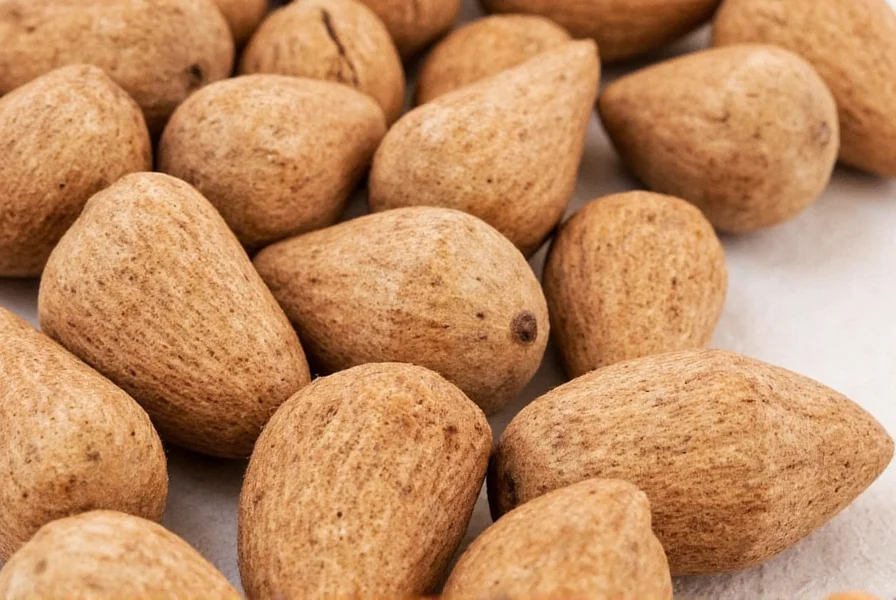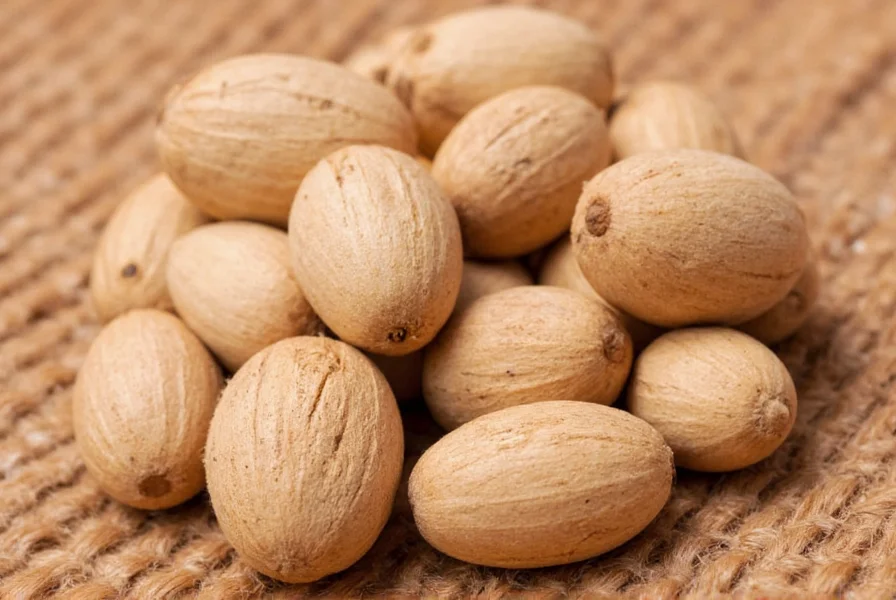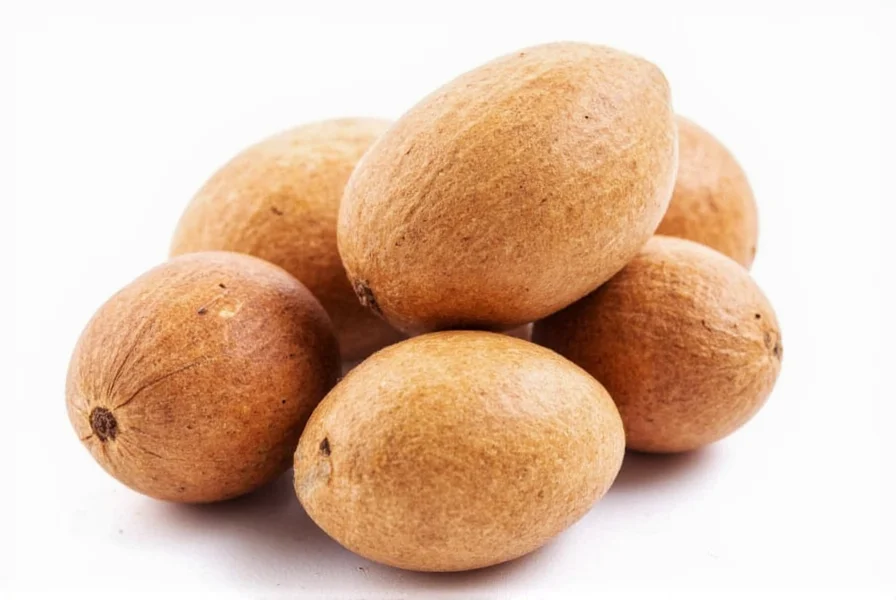Understanding the distinction between whole nutmeg vs ground nutmeg is essential for anyone serious about culinary excellence. While ground nutmeg offers convenience, it rapidly loses its volatile oils and aromatic compounds, resulting in significantly diminished flavor within weeks of grinding. Whole nutmeg, by contrast, maintains its potency for up to two years when properly stored, providing a consistently vibrant taste experience that transforms ordinary recipes into extraordinary culinary creations.
What Exactly Is Whole Nutmeg?
Whole nutmeg is the single seed harvested from the fruit of the Myristica fragrans evergreen tree, native to the Banda Islands in Indonesia. After harvesting, the fruit splits open to reveal the seed surrounded by a lacy red covering called mace (which is processed separately as its own spice). The seed itself is oval-shaped, about the size of an almond, with a hard, brown shell protecting the aromatic interior.

Flavor Profile and Aromatic Complexity
The flavor profile of freshly grated whole nutmeg is remarkably complex—warm, slightly sweet, nutty, with subtle notes of clove and pine. This complexity comes from over 150 identified chemical compounds, including myristicin, elemicin, and safrole, which work synergistically to create a multidimensional taste experience impossible to replicate with pre-ground versions.
When evaluating whole nutmeg shelf life versus ground, the difference is dramatic. Whole seeds retain 95% of their essential oils for 1-2 years when stored properly, while ground nutmeg loses 70-80% of its volatile compounds within 3-4 weeks. This scientific reality explains why professional kitchens exclusively use whole nutmeg for signature dishes.
Practical Benefits of Choosing Whole Nutmeg
The advantages of using whole nutmeg extend beyond mere flavor superiority:
| Characteristic | Whole Nutmeg | Ground Nutmeg |
|---|---|---|
| Flavor intensity | Bright, complex, vibrant | Muted, one-dimensional |
| Shelf life | 1-2 years (properly stored) | 3-4 weeks |
| Cost efficiency | Higher initial cost, better long-term value | Lower initial cost, frequent replacement needed |
| Culinary control | Precise freshness and quantity | Fixed potency, less control |
How to Use Whole Nutmeg in Cooking
Mastering how to use whole nutmeg in cooking requires the right tools and technique. A microplane zester or specialized nutmeg grater works best, as traditional graters often clog with the fine particles. For optimal results:
- Grate directly over your dish just before serving for maximum aroma
- Use fine pressure for delicate dishes like béchamel or custards
- Apply firmer pressure for heartier applications like meat rubs
- Start with 1/8 teaspoon grated equivalent per serving and adjust to taste
Professional chefs recommend grating whole nutmeg into a small bowl first rather than directly into hot liquids, which can cause the aromatic compounds to evaporate too quickly. This technique preserves more of the delicate flavor notes that make freshly grated nutmeg benefits so valuable in fine cooking.
Proper Storage Methods for Maximum Freshness
The best way to store whole nutmeg involves protecting it from the four enemies of spice quality: light, heat, air, and moisture. Follow these guidelines:
- Keep in an airtight container made of dark glass or opaque material
- Store in a cool, dark cupboard away from stoves or ovens
- Maintain consistent temperature (avoid refrigerator due to moisture)
- Label with purchase date to track freshness
For extended storage beyond one year, consider dividing your supply into smaller portions and keeping the majority in the freezer, where whole nutmeg maintains exceptional quality for up to three years. Always allow frozen nutmeg to reach room temperature before opening the container to prevent condensation.
Culinary Applications That Shine with Whole Nutmeg
Certain dishes particularly benefit from the superior quality of freshly grated whole nutmeg:
- Savory applications: Bechamel sauce, potato gratin, creamed spinach, meatloaf, and cheese-based soups
- Sweet applications: Pumpkin pie, apple crisp, rice pudding, and spiced hot chocolate
- Beverages: Eggnog, mulled wine, and specialty coffee drinks
- Preservation: Added to pickling brines for vegetables and fruits
When following traditional European recipes that call for nutmeg, they almost invariably assume the use of whole nutmeg freshly grated. Understanding this historical context explains why many home cooks find their versions lacking compared to restaurant-quality dishes.
Substitution Guidelines: Whole vs Ground
While whole nutmeg is superior, there are times when substitution is necessary. When converting between forms:
- 1 whole nutmeg seed ≈ 2-3 teaspoons freshly grated ≈ 1.5-2 teaspoons pre-ground
- When substituting ground for whole, use 25% less than recipe specifies
- For critical applications (like béchamel), never substitute ground for whole
Remember that using whole nutmeg in recipes specified for ground will always yield superior results, but the reverse substitution diminishes the dish's potential significantly.
Buying Tips for Quality Whole Nutmeg
Selecting high-quality whole nutmeg involves several key considerations:
- Choose plump, heavy seeds that feel dense for their size
- Look for uniform brown color without spots or blemishes
- Fresh seeds should have a noticeable aroma when scratched
- Purchase from specialty spice merchants rather than general grocery stores
- Consider buying smaller quantities more frequently for peak freshness

For those serious about culinary authenticity, seeking out West Indian nutmeg (from Grenada) versus East Indian nutmeg (from Indonesia) reveals subtle flavor differences—West Indian varieties tend to be slightly sweeter and more complex, making them particularly prized by professional chefs.
Conclusion: Elevating Your Culinary Experience
Incorporating whole nutmeg into your cooking repertoire represents a small investment with substantial flavor dividends. The difference between freshly grated whole nutmeg and its pre-ground counterpart is as significant as using fresh garlic versus powdered garlic—both technically the same ingredient, but delivering dramatically different culinary experiences. By understanding proper storage, usage techniques, and applications, you unlock a dimension of flavor that transforms ordinary dishes into memorable culinary experiences that showcase true attention to detail and quality.
Frequently Asked Questions
How much ground nutmeg equals one whole nutmeg?
One whole nutmeg seed yields approximately 2-3 teaspoons of freshly grated nutmeg, which equals about 1.5-2 teaspoons of pre-ground nutmeg. For best results in recipes calling for ground nutmeg, use 25% less than specified when substituting freshly grated whole nutmeg.
Does whole nutmeg really taste better than pre-ground?
Yes, whole nutmeg tastes significantly better than pre-ground versions. Scientific analysis shows freshly grated whole nutmeg contains up to 300% more volatile aromatic compounds than pre-ground nutmeg stored for just one month. These compounds degrade rapidly after grinding, resulting in noticeably diminished flavor and complexity in pre-ground products.
What's the best tool for grating whole nutmeg?
A microplane zester or specialized nutmeg grater produces the finest results. Traditional box graters often clog with nutmeg's oily texture. For professional-quality results, look for a dedicated nutmeg grinder with adjustable settings that allow control over the coarseness of the grated spice, preserving maximum flavor compounds during the grating process.
Can you use whole nutmeg in baking?
Absolutely. Whole nutmeg excels in baking applications where its complex flavor profile can shine. It's particularly valuable in recipes like pumpkin pie, apple crisp, and spice cakes where the heat of baking would cause pre-ground nutmeg's volatile compounds to evaporate prematurely. For best results, grate whole nutmeg directly into dry ingredients to ensure even distribution throughout your baked goods.
How can you tell if whole nutmeg has gone bad?
Fresh whole nutmeg should have a noticeable aromatic scent when scratched with a fingernail. If it has little to no aroma, appears excessively dry and brittle, or shows signs of mold, it's past its prime. Properly stored whole nutmeg maintains quality for 1-2 years, while compromised storage conditions can reduce this to 6-8 months. Always perform a smell test before using older stocks.











 浙公网安备
33010002000092号
浙公网安备
33010002000092号 浙B2-20120091-4
浙B2-20120091-4